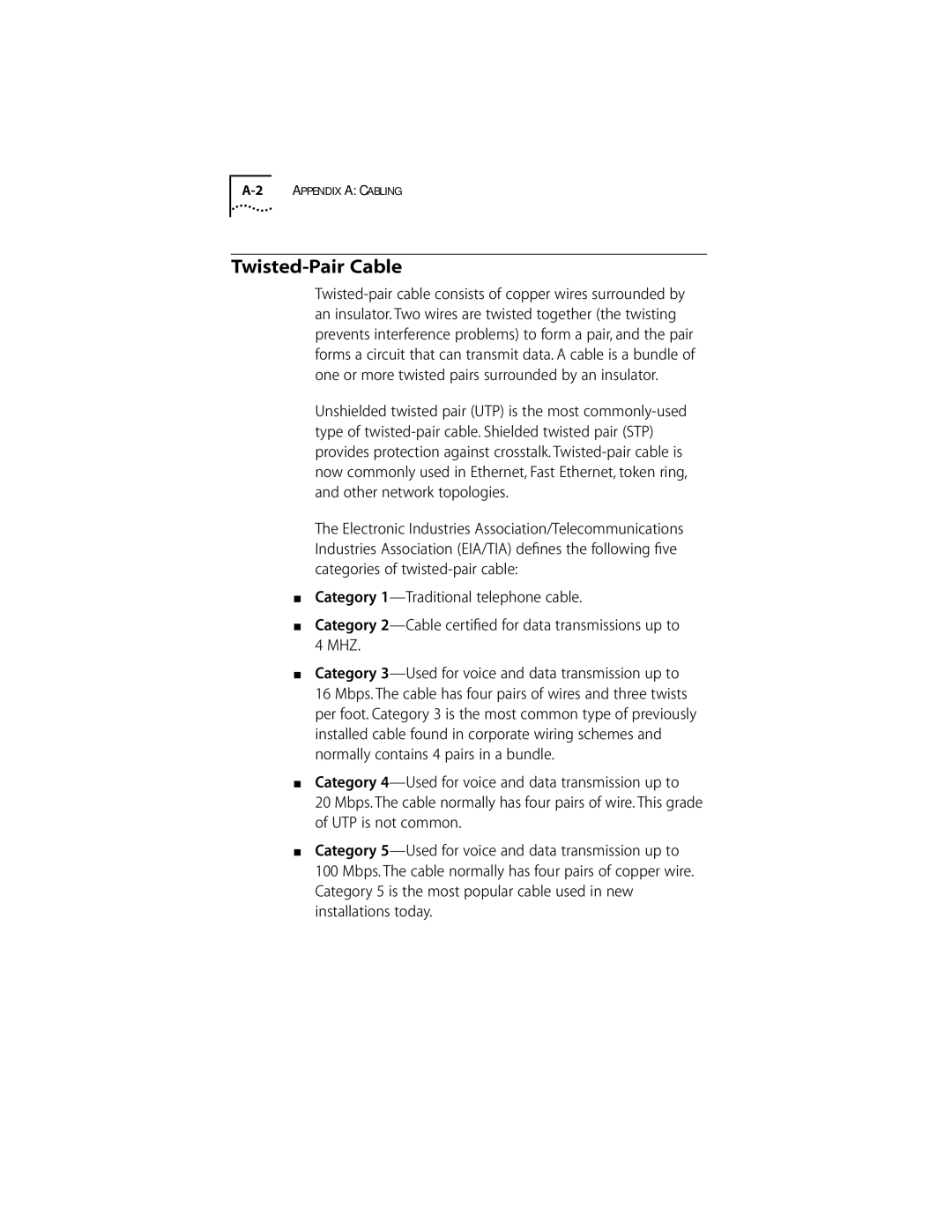A-2 APPENDIX A: CABLING
Twisted-Pair Cable
Twisted-pair cable consists of copper wires surrounded by an insulator. Two wires are twisted together (the twisting prevents interference problems) to form a pair, and the pair forms a circuit that can transmit data. A cable is a bundle of one or more twisted pairs surrounded by an insulator.
Unshielded twisted pair (UTP) is the most commonly-used type of twisted-pair cable. Shielded twisted pair (STP) provides protection against crosstalk. Twisted-pair cable is now commonly used in Ethernet, Fast Ethernet, token ring, and other network topologies.
The Electronic Industries Association/Telecommunications Industries Association (EIA/TIA) defines the following five categories of twisted-pair cable:
Category 1—Traditional telephone cable.
Category 2—Cable certified for data transmissions up to 4 MHZ.
■Category 3—Used for voice and data transmission up to
16 Mbps. The cable has four pairs of wires and three twists per foot. Category 3 is the most common type of previously installed cable found in corporate wiring schemes and normally contains 4 pairs in a bundle.
■Category 4—Used for voice and data transmission up to
20 Mbps. The cable normally has four pairs of wire. This grade of UTP is not common.
■Category 5—Used for voice and data transmission up to 100 Mbps. The cable normally has four pairs of copper wire. Category 5 is the most popular cable used in new installations today.

